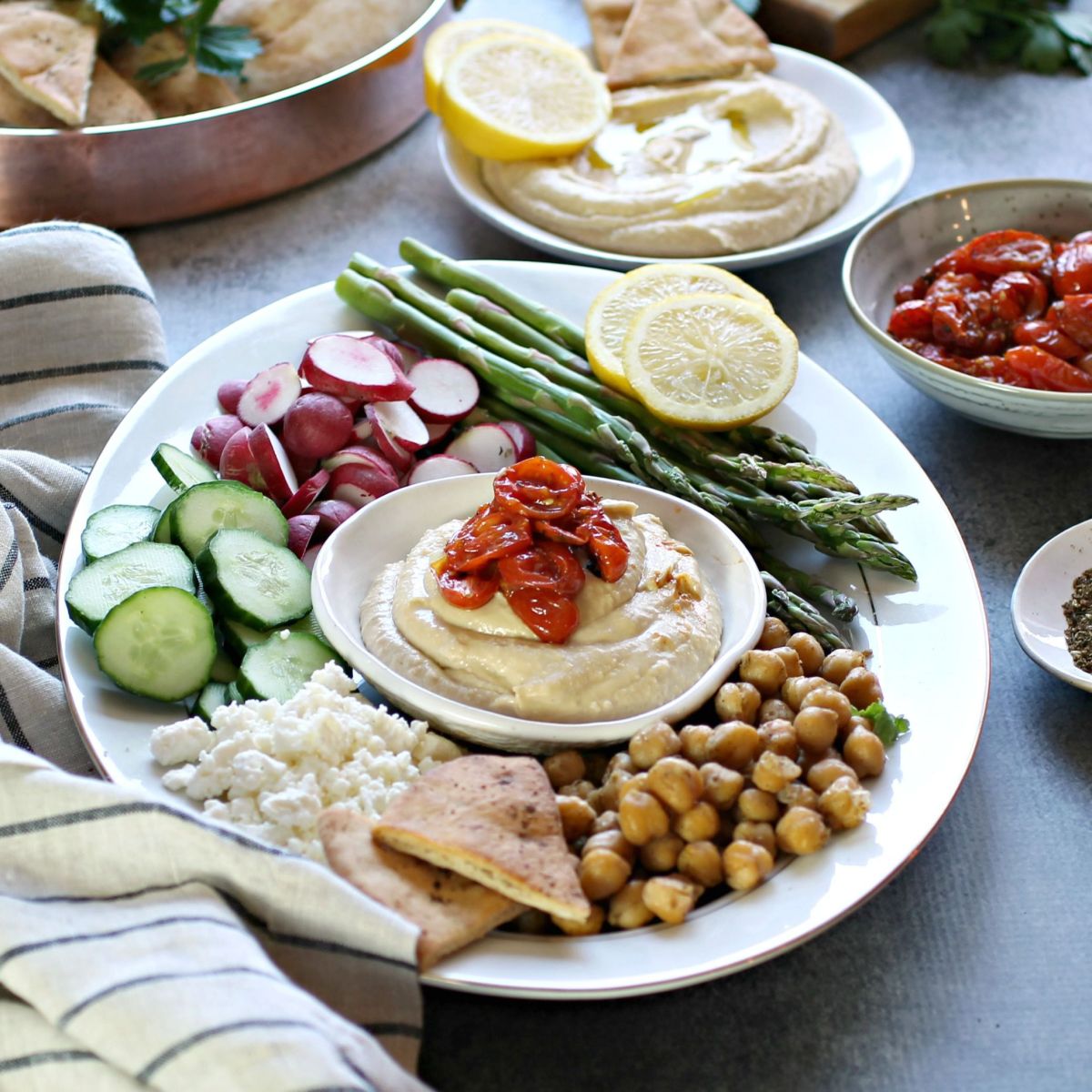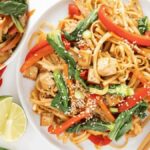Imagine a vibrant tapestry of flavors, the rich aromas of spices swirling through the air, a feast for the senses – all without the worry of common allergens. This exploration delves into the captivating world of Middle Eastern cuisine, adapted to cater to those with dietary restrictions. We’ll uncover delicious secrets, transforming beloved dishes like hummus, pita bread, and decadent desserts into allergen-free delights, preserving the authenticity and vibrant spirit of the original recipes. Prepare to embark on a culinary journey that is both exciting and inclusive.
From gluten-free flatbreads that retain their satisfying chewiness to creamy dairy-free dips bursting with flavor, we’ll navigate the challenges of allergen adaptation, providing detailed recipes and substitutions that ensure both taste and safety. We’ll examine the nutritional aspects of these adaptations, showcasing how allergen-free alternatives can still offer a wealth of vitamins, minerals, and fiber. This guide provides a comprehensive resource for creating a delicious and worry-free Middle Eastern meal experience.
Popular Middle Eastern Dishes Adapted for Allergy Sufferers
Savoring the vibrant flavors of Middle Eastern cuisine doesn’t have to mean compromising on health or well-being. Many traditional dishes can be easily adapted to exclude common allergens like dairy, gluten, nuts, soy, and eggs, allowing those with dietary restrictions to enjoy the rich tapestry of tastes this cuisine offers. By using creative substitutions and mindful ingredient choices, the authentic flavors can be preserved while ensuring a safe and delicious meal.
Adapting Popular Middle Eastern Dishes
The following list showcases ten popular Middle Eastern dishes modified to be free from common allergens. These adaptations focus on preserving the original spirit of the dishes while prioritizing safety and deliciousness.
- Hummus: Traditionally made with tahini (sesame seeds), this can be made allergen-free by using sunflower seed butter as a substitute. The resulting hummus will have a slightly different flavor profile, but it will still retain its creamy texture and savory notes.
- Baba Ghanoush: This smoky eggplant dip relies heavily on tahini. To create an allergen-free version, simply omit the tahini and increase the lemon juice and garlic for a bolder flavor.
- Falafel: Traditionally made with chickpeas and various herbs and spices, the gluten-free nature of falafel makes it relatively easy to adapt. Ensure your flour blend (if used as a binder) is gluten-free.
- Muhammara: This vibrant red pepper dip typically includes walnuts. Substitute with sunflower seeds for a similar nutty texture and slightly milder flavor.
- Tabbouleh: This refreshing parsley salad is naturally gluten-free, dairy-free, nut-free, soy-free, and egg-free in its traditional form. Focus on using high-quality fresh parsley and a good quality olive oil.
- Fattoush: This crunchy salad features toasted pita bread. Substitute the pita with gluten-free pita or even toasted chickpeas for a similar satisfying crunch.
- Chicken Shawarma: The marinade for shawarma is typically allergen-free. Ensure that any added sauces or toppings are also allergen-free. Serve in gluten-free pita or lettuce wraps.
- Lamb Kofta: These flavorful grilled meatballs are naturally free of many allergens. Just be mindful of any added ingredients or sauces.
- Rice with Saffron and Herbs: This fragrant side dish is naturally free from most common allergens. The saffron provides a beautiful color and delicate flavor.
- Roasted Vegetables with Lemon and Herbs: A simple yet flavorful side, this dish is naturally free of most common allergens. Experiment with different vegetables and herbs for a varied taste experience.
Comparison of Original and Allergen-Free Recipes
The following table compares three popular dishes in their original form and their allergen-free adaptations, highlighting the changes made and their potential impact on flavor.
| Dish | Original Ingredient | Allergen-Free Substitution | Flavor Impact |
|---|---|---|---|
| Hummus | Tahini (sesame seeds) | Sunflower seed butter | Slightly less intense sesame flavor, but retains creaminess; a subtle nutty undertone. |
| Muhammara | Walnuts | Sunflower seeds | Less intense, richer flavor; a slightly different nuttiness. |
| Fattoush | Pita bread | Gluten-free pita bread or toasted chickpeas | Similar crunch, but potentially a slightly different textural experience. The flavor profile remains largely the same. |
Challenges in Adapting Middle Eastern Recipes
Adapting traditional Middle Eastern recipes to be allergen-free presents several challenges. Many dishes rely on ingredients like tahini, nuts, and dairy for their characteristic flavors and textures. Finding suitable substitutes that maintain the authenticity of the dish while ensuring safety can be a delicate balancing act. For example, replacing tahini in hummus with sunflower seed butter might alter the subtle nuances of flavor, requiring careful adjustment of other spices and ingredients to compensate. Similarly, omitting nuts from a dish like Muhammara can significantly impact its texture and richness, necessitating creative substitutions to achieve a similar mouthfeel. The process requires a deep understanding of the role each ingredient plays in the overall flavor profile and careful experimentation to achieve a satisfactory result.
Gluten-Free Middle Eastern Breads and Flatbreads

The vibrant world of Middle Eastern cuisine often revolves around its diverse breads and flatbreads, integral to countless meals. However, for those with gluten sensitivities, enjoying these culinary staples can present a challenge. This section explores the creation of delicious gluten-free alternatives to popular Middle Eastern breads, focusing on replicating both texture and flavor. We will delve into three specific recipes, comparing their nutritional profiles to their traditional counterparts.
Gluten-Free Pita Bread Recipe
This recipe utilizes a blend of gluten-free flours to achieve a pliable, pocket-able pita. The key is to balance the starches for optimal texture and rise.
- Combine 1 ½ cups gluten-free all-purpose flour blend (containing xanthan gum), ½ cup tapioca starch, 1 teaspoon baking powder, ½ teaspoon salt, and 1 tablespoon sugar in a large bowl.
- In a separate bowl, whisk together 1 cup warm water (105-115°F), 2 tablespoons olive oil, and 1 teaspoon apple cider vinegar.
- Gradually add the wet ingredients to the dry ingredients, mixing until a soft, slightly sticky dough forms. Knead the dough gently for 2-3 minutes on a lightly floured surface.
- Divide the dough into 8 equal-sized balls. Flatten each ball into a thin circle (about 6 inches in diameter).
- Heat a large, dry skillet or griddle over medium-high heat. Cook each pita for 1-2 minutes per side, or until lightly browned and puffed up.
The gluten-free pita, while slightly less airy than its traditional counterpart, possesses a similar soft texture and pleasingly chewy mouthfeel. Its appearance is nearly identical, exhibiting a slightly browned surface with characteristic puffing. However, it may lack the extreme puffiness of traditional pita due to the absence of gluten.
Gluten-Free Khubz Recipe
Khubz, a staple in many Middle Eastern countries, requires a slightly different approach for a gluten-free version. This recipe utilizes a combination of rice flour and almond flour for a unique flavor and texture.
- Preheat oven to 400°F (200°C).
- In a large bowl, combine 1 cup brown rice flour, ½ cup almond flour, 1 teaspoon baking powder, ½ teaspoon salt, and 1 tablespoon olive oil.
- Gradually add ¾ cup warm water, mixing until a soft dough forms. The dough will be slightly sticky.
- Roll out the dough to about ¼ inch thickness. Cut into desired shapes (traditionally oval).
- Bake for 12-15 minutes, or until lightly golden brown and crisp.
The gluten-free khubz boasts a slightly denser texture than the traditional version, offering a pleasant crispness. Its appearance is similar, displaying a golden-brown hue, though it may not possess the same level of airy lightness.
Gluten-Free Markook Recipe
Markook, a thin flatbread, presents a unique challenge for gluten-free baking. This recipe uses a blend of flours to achieve the desired thin and crispy texture.
- Combine 1 cup gluten-free all-purpose flour blend, ½ cup sorghum flour, ¼ cup tapioca starch, ½ teaspoon salt, and 1 tablespoon olive oil in a large bowl.
- Gradually add ¾ cup warm water, mixing until a smooth dough forms. The dough should be slightly more firm than the other recipes.
- Divide the dough into 4 equal portions. Roll each portion into a very thin circle (about 8-10 inches in diameter).
- Heat a large, dry skillet or griddle over medium heat. Cook each markook for 2-3 minutes per side, or until lightly browned and crispy.
The gluten-free markook mimics the thin and crispy texture of its traditional counterpart remarkably well. Its appearance is virtually indistinguishable, exhibiting a lightly browned, almost translucent surface.
Nutritional Comparison
A direct nutritional comparison between gluten-free and traditional Middle Eastern breads is complex, varying significantly depending on the specific flour blend and recipe used. However, general trends can be observed. Gluten-free versions often have a lower protein content and may contain less fiber than their traditional counterparts. The carbohydrate content can be comparable or slightly higher, depending on the gluten-free flour blend. For example, a traditional pita bread might contain approximately 7g of protein and 10g of fiber per serving, while a gluten-free version might contain 5g of protein and 6g of fiber. These values are estimates and can fluctuate greatly based on ingredients. It’s crucial to consult specific nutritional information for individual products.
Complete Middle Eastern Meal Plan (Allergen-Free)
This three-day meal plan showcases the vibrant flavors of Middle Eastern cuisine while adhering strictly to common allergen restrictions. Each recipe is designed to be free of gluten, dairy, soy, nuts, and shellfish, ensuring a safe and delicious culinary journey. Nutritional information is provided as an estimate, and individual values may vary based on specific ingredients and portion sizes.
Three-Day Allergen-Free Middle Eastern Meal Plan
This plan offers a balanced intake of macronutrients and provides a variety of textures and tastes, highlighting the diverse culinary landscape of the Middle Eastern region. Each day’s menu is carefully crafted to be both nutritious and satisfying.
Day 1: A Taste of Lebanon
Breakfast: Lemon-Herb Quinoa Porridge with Dates and Coconut Milk. A vibrant yellow porridge, speckled with the deep brown of Medjool dates and the creamy white of coconut milk. The fresh citrus scent of lemon verbena complements the subtle sweetness of the dates.
Lunch: Chicken Shawarma with Cauliflower Rice and Tahini-Free Dressing. Tender slices of chicken, marinated in a blend of aromatic spices, are arranged on a bed of fluffy cauliflower rice. A vibrant green tahini-free dressing, made with herbs and lemon juice, adds a zesty touch.
Dinner: Lamb Kofta with Roasted Vegetables and Saffron Rice. Juicy lamb meatballs, seasoned with traditional Middle Eastern spices, are nestled amongst colorful roasted vegetables – vibrant red peppers, golden carrots, and deep green zucchini. The rice, infused with saffron, adds a delicate golden hue and subtle floral aroma.
Day 2: Exploring Moroccan Flavors
Breakfast: Spiced Apricot and Banana Smoothie with Coconut Yogurt. A creamy, golden-orange smoothie, rich with the sweetness of apricots and bananas, subtly spiced with cinnamon and cardamom. The creamy coconut yogurt adds a luxurious texture.
Lunch: Tagine with Chickpeas and Apricots (Dairy-Free). A hearty stew featuring tender chickpeas and sweet apricots, simmered in a rich broth infused with warming spices like ginger, turmeric, and cumin. The stew’s color ranges from a deep amber to a light orange, depending on the apricot’s ripeness.
Dinner: Moroccan Carrot and Sweet Potato Salad with Lemon-Herb Dressing. A colorful salad featuring bright orange carrots and earthy sweet potatoes, tossed in a zesty lemon-herb dressing. The salad’s vibrant hues are a visual feast, representing the sunny Moroccan landscape.
Day 3: A Journey Through the Levant
Breakfast: Freekeh Salad with Pomegranate Seeds and Herbs. A refreshing salad featuring nutty freekeh, studded with ruby-red pomegranate seeds and fragrant herbs like parsley and mint. The contrasting colors and textures create a visually appealing and flavorful start to the day.
Lunch: Falafel Pitas (Gluten-Free) with Cucumber-Tomato Salad. Crispy falafel balls, made from chickpeas and herbs, are nestled in soft gluten-free pita bread. A refreshing cucumber-tomato salad, with a simple lemon vinaigrette, adds a cool counterpoint to the warm falafel.
Dinner: Baked Chicken with Za’atar and Roasted Vegetables. Tender chicken pieces, seasoned with fragrant za’atar, are roasted alongside colorful vegetables, resulting in a dish with a complex aroma and a spectrum of colors.
Detailed Recipes (Excerpts)
The following are abbreviated examples; full recipes would be significantly longer.
Lemon-Herb Quinoa Porridge: Combine 1 cup quinoa, 2 cups coconut milk, 1/4 cup chopped fresh herbs (parsley, mint), zest of 1 lemon, and 1/4 cup chopped dates. Simmer until quinoa is cooked.
Chicken Shawarma: Marinate chicken in a mixture of olive oil, lemon juice, garlic, paprika, cumin, and coriander. Cook on skewers or in a pan. Serve with cauliflower rice and a tahini-free dressing (e.g., lemon juice, olive oil, herbs).
Moroccan Carrot and Sweet Potato Salad: Roast carrots and sweet potatoes until tender. Toss with olive oil, lemon juice, cumin, and chopped cilantro.
Nutritional Information (Estimates per Day)
Nutritional values are approximate and will vary depending on specific ingredients and portion sizes. Consult a nutritionist for personalized dietary advice.
| Nutrient | Day 1 (approx.) | Day 2 (approx.) | Day 3 (approx.) |
|---|---|---|---|
| Calories | 1800-2000 | 1700-1900 | 1600-1800 |
| Protein (grams) | 70-80 | 65-75 | 60-70 |
| Carbohydrates (grams) | 200-220 | 180-200 | 170-190 |
| Fat (grams) | 60-70 | 55-65 | 50-60 |
Three-Day Meal Plan Preparation Guide
Efficient preparation is key to enjoying this allergen-free Middle Eastern feast. Prioritize tasks that can be done ahead of time. For example, marinate the chicken for the shawarma and prepare the cauliflower rice the day before. Chop vegetables and measure out spices in advance to streamline the cooking process. Utilize batch cooking techniques where possible; for example, roast a large batch of vegetables to use across multiple meals. This approach minimizes cooking time and maximizes flavor.
By thoughtfully adapting traditional recipes, we’ve demonstrated that enjoying the rich tapestry of Middle Eastern flavors is achievable for everyone, regardless of dietary restrictions. This journey through allergen-free Middle Eastern cuisine has unveiled a world of culinary possibilities, highlighting the creativity and adaptability inherent in this vibrant culinary tradition. With careful ingredient substitutions and a passion for authentic flavors, we can create delicious and inclusive meals that celebrate the diverse tastes of the Middle East. The result? A culinary adventure that is both satisfying and safe, leaving you feeling nourished and delighted.
Helpful Answers
Can I freeze allergen-free Middle Eastern dishes?
Many allergen-free Middle Eastern dishes freeze well. Properly store them in airtight containers for optimal quality and freshness.
Are all Middle Eastern spices naturally allergen-free?
Most are, but always check labels to ensure there’s no cross-contamination during processing. Some spice blends might contain nuts or other allergens.
Where can I find allergen-free Middle Eastern ingredients?
Specialty grocery stores, health food stores, and online retailers often carry allergen-free options. Many ingredients, like chickpeas and vegetables, are naturally allergen-free.
How do I ensure cross-contamination doesn’t occur when preparing allergen-free meals?
Use separate cutting boards, utensils, and cookware for allergen-free dishes. Thoroughly clean surfaces before and after preparation.


